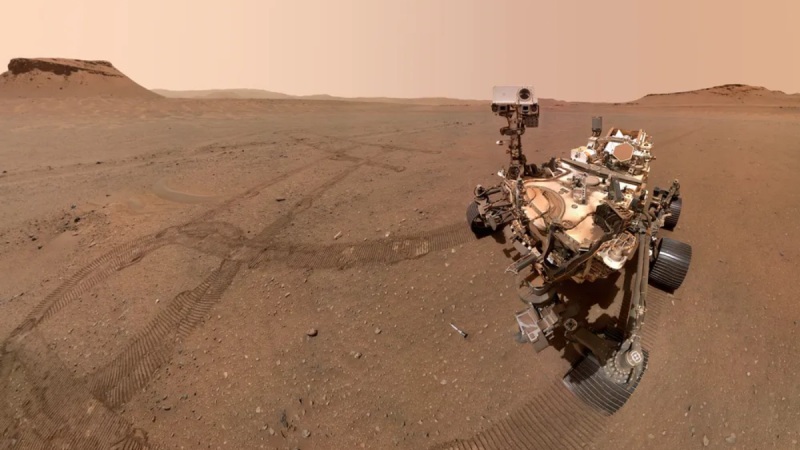NASA’s Perseverance rover may have made one of its most significant discoveries on Mars: potential evidence of ancient life. The rover encountered a distinctively shaped rock, dubbed “Cheyava Falls,” which might contain fossilized microbes from a time when Mars had liquid water. On July 21, Perseverance drilled into this rock in the Neretva Vallis, a former river valley, to gather a core sample. This sample is securely stored beneath the rover, with plans to eventually return it to Earth for detailed analysis.
Ken Farley, a project scientist from Caltech, highlighted the rock’s importance, describing it as the most complex and potentially crucial find by Perseverance so far. The rock features several intriguing characteristics that have piqued scientific interest. The presence of calcium sulfate veins indicates that water once flowed through it. The middle section of the rock, which has a reddish tint, contains organic compounds detected by the rover’s SHERLOC instrument. Additionally, there are off-white spots bordered by black, which could indicate possible energy sources for ancient microbes, as analyzed by the PIXL instrument.
David Flannery, an astrobiologist from the Queensland University of Technology and a member of the Perseverance science team, noted that similar features on Earth are often linked with fossilized records of subsurface microbes. However, the actual nature of these findings will remain uncertain until the samples can be analyzed back on Earth. This analysis is part of the Mars Sample Return Program, a joint effort between NASA and the European Space Agency, scheduled for the 2030s.
Although there are other, non-biological explanations for these features, the possibility remains that the core sample might contain evidence of fossilized microbes, potentially proving that life once existed beyond Earth. Farley emphasized the necessity of using advanced laboratory instruments on Earth to thoroughly understand the historical conditions in Mars’ Jezero Crater and Neretva Vallis, dating back billions of years.












